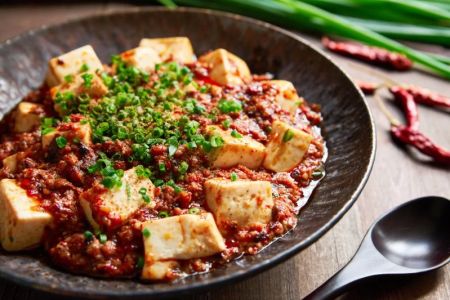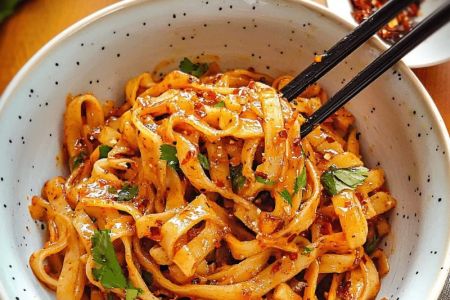- 1-Understanding-the-Importance-of-a-Website-for-Chinese-Restaurants
- 2-Key-Elements-of-an-Effective-Chinese-Restaurant-Website
- 3-Choosing-the-Right-Platform-and-Design-Style
- 4-Integrating-Online-Ordering-and-Reservation-Systems
- 5-Optimizing-Your-Website-for- SEO-and-Local-Search
- 6-Leveraging-Content-and-Visuals-to-Engage-Visitors
- 7-Maintaining-and-Updating-Your-Website-for-Long-Term-Success
1. Understanding the Importance of a Website for Chinese Restaurants
In today’s digital age, having a strong online presence is crucial for any restaurant, especially Chinese restaurants competing in a crowded market. A well-crafted website is often the first point of contact potential customers have with your business. It not only showcases your menu but also highlights your unique culinary style and ambiance. Beyond just information, your website should serve as a marketing tool that attracts new customers and retains loyal ones. For Chinese restaurants, a website offers the chance to present rich cultural stories and authentic dishes, inviting visitors to experience the cuisine before they even step inside.
2. Key Elements of an Effective Chinese Restaurant Website
Creating an engaging website requires careful attention to essential features. These include an easy-to-navigate menu showcasing signature dishes, clear contact information, and operating hours. Including customer reviews and testimonials builds trust and credibility. Mobile responsiveness ensures visitors can access your site seamlessly on any device, critical given the rising use of smartphones for food searches. Incorporating a blog or news section to share recipes, events, or cultural insights further enriches user experience. These elements combine to create a site that’s both functional and inviting.
3. Choosing the Right Platform and Design Style
Selecting the right website platform is foundational. Popular content management systems like WordPress, Wix, or Squarespace offer customizable templates tailored for restaurant websites. For Chinese restaurant website design, a balance between traditional cultural aesthetics and modern usability is key. Using colors like red and gold can evoke Chinese heritage, but ensure the design remains clean and user-friendly. Hiring a professional designer experienced in restaurant branding can help achieve a polished look that appeals to your target audience and differentiates your brand.
4. Integrating Online Ordering and Reservation Systems
Offering online ordering and reservations directly through your website enhances convenience and can significantly boost sales. Integration with reliable platforms or custom-built systems allows customers to browse your menu, place orders, and book tables effortlessly. This not only improves customer satisfaction but also streamlines restaurant operations. Ensuring the process is secure and simple reduces friction. Highlighting special offers or combo deals during online ordering can also increase average order values. For many diners, especially in the post-pandemic era, the ability to order online is a deciding factor in restaurant choice.
5. Optimizing Your Website for SEO and Local Search
To ensure your Chinese restaurant website ranks high on search engines, implementing strong SEO strategies is essential. This includes optimizing page titles, meta descriptions, and headers with keywords like “Chinese Food,” “best Chinese restaurant near me,” and “authentic Chinese cuisine.” Local SEO tactics, such as creating a Google My Business profile and adding location-specific keywords, help attract nearby customers. Regularly updating content and building backlinks increase your site’s authority. A well-optimized site makes it easier for hungry diners to find you when searching for the best local Chinese food options.
6. Leveraging Content and Visuals to Engage Visitors
High-quality images and engaging content are powerful tools for capturing attention. Professional photos of your dishes, interior, and chefs create a mouthwatering visual experience. Videos showcasing cooking techniques or customer testimonials add authenticity and personality. Storytelling through blog posts about Chinese culinary traditions or the history behind dishes can deepen visitors’ connection to your brand. Content that educates and entertains encourages longer site visits and higher conversion rates. Pairing visual appeal with informative text ensures your website leaves a memorable impression.
7. Maintaining and Updating Your Website for Long-Term Success
Launching your website is just the beginning. Regular maintenance, including software updates, security checks, and content refreshes, keeps your site running smoothly and securely. Seasonal menu updates, new promotions, and upcoming events should be reflected promptly. Monitoring website analytics helps identify visitor behavior and optimize user experience. Staying active on your site and integrating it with social media channels enhances your reach. Consistent attention ensures your Chinese restaurant website remains a dynamic tool that supports ongoing business growth.
For those looking to build or enhance a Chinese restaurant website, resources and tailored products are available through Chinese Food. Their offerings help simplify the process and ensure your website embodies the spirit and flavor of your restaurant while meeting modern digital expectations.







